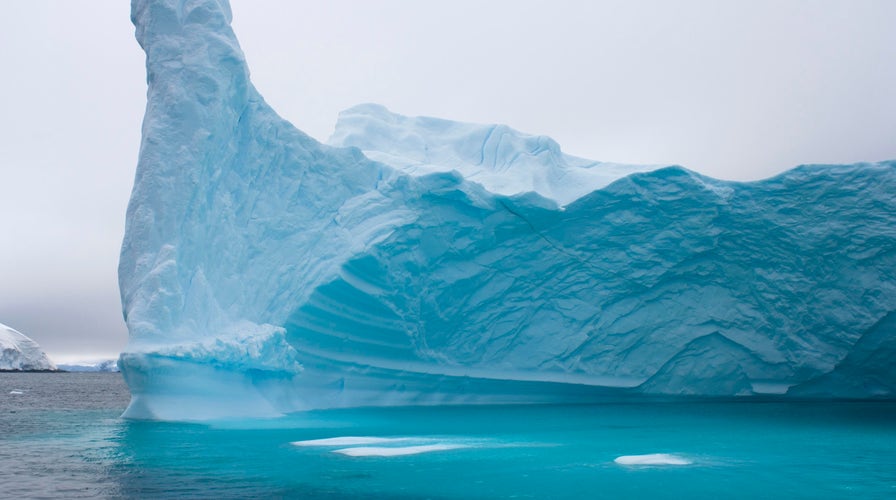Fox News Flash top headlines for June 29
Fox News Flash top headlines are here. Check out what's clicking on Foxnews.com.
The South Pole has warmed more than three times the global rate for the past three decades, a new study reports.
Scientists involved in the study, which was published Monday in the peer-reviewed British journal Nature Climate Change, believe this warming is linked to accelerating ice melt elsewhere in Antarctica, which could in turn fuel faster sea level increase globally.
According to the researchers' findings, the warming at the South Pole is primarily from natural climate patterns, but it has been intensified by human-caused climate change. The two factors "have worked in tandem to make this one of the strongest warming trends on Earth," the study warns.
YOUTUBE BANS DAVID DUKE, RICHARD SPENCER FOR HATE SPEECH

Iceberg floating off the western Antarctic peninsula, Antarctica, Southern Ocean. (Steven Kazlowski / Barcroft Media / Getty Images)
"This study clearly demonstrates that the remoteness of a region is no barrier to it being susceptible to rapid climate change,” said study co-author Gareth Marshall of the British Antarctic Survey in a statement.
TWO LIGHTNING 'MEGAFLASES' BROKE PREVIOUS RECORDS FOR DISTANCE AND TIME
Study lead author Kyle Clem, a researcher at Victoria University of Wellington in New Zealand, along with his colleagues, used weather station data and climate models to learn more about the South Pole's warming trend.
The South Pole warmed by roughly 1.1 degrees Fahrenheit per decade over the past three decades, the study found.
"We have natural processes that are always going to be taking place amid global warming and human's influence on the climate system," Clem told CNN. "When the two work together it is quite remarkable."

